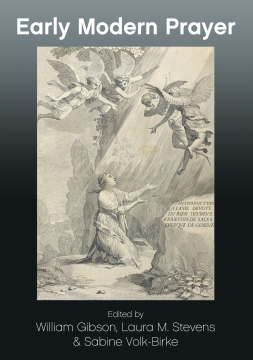
Additional Information
Book Details
Abstract
The essays in this book aim to answer the following questions: What was the place of prayer in the early modern world? What did it look and sound like? Of what aesthetic and political structures did it partake, and how did prayer affect art, literature and politics? How did the activities, expressions and texts we might group under the term prayer serve to bind disparate peoples together, or, in turn, to create friction and fissures within communities? What roles did prayer play in intercultural contact, including violence, conquest and resistance? How can we use the prayers of those centuries (roughly 1500–1800) imprecisely termed the ‘early modern’ era to understand the peoples, polities and cultures of that time?
Table of Contents
| Section Title | Page | Action | Price |
|---|---|---|---|
| Front Cover | Front Cover | ||
| Title Page | i | ||
| Contents | iii | ||
| Contributors | v | ||
| Introduction: Early Modern Prayer | 1 | ||
| Rowlandson’s ‘Cover Story’: The Revision of Private Devotional Practice into Public Narrative | 12 | ||
| The Prayer of an Empress and the Death Penalty Moratorium\rin Eighteenth-Century Russia | 36 | ||
| The Captive at Prayer: Cross-Cultural Trauma as Revealed in the Diary of Stephen Williams | 56 | ||
| The Eye of a Needle: Commemorating the ‘Godly Merchant’ in the Early Modern Funeral Sermon | 70 | ||
| Mary’s Magnificat in Eighteenth-Century Britain and New England | 91 | ||
| The Order and Methods of Nosegays: Mental Prayer inFrançois de Sales’s Introduction à la vie dévote (1609) and its Eighteenth-Century English Adaptations | 108 | ||
| Index | 131 | ||
| Copyright Page | 138 | ||
| Back Cover | Back Cover |
